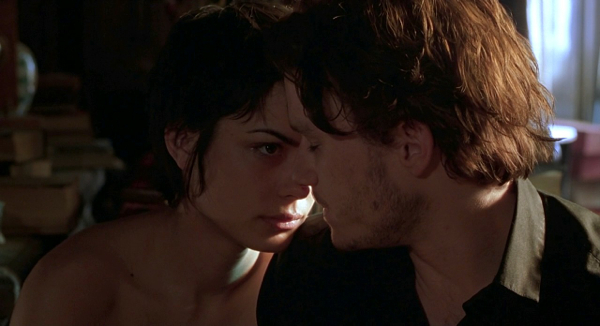Movie review by Greg Carlson
Writer-director Brian Helgeland cannot be faulted for trying to expand his repertoire with “The Order,” despite the fact that the movie is a complete dud. Following up the occasionally clever “A Knight’s Tale” (which also starred Heath Ledger, Shannyn Sossamon, and Mark Addy) with a contemporary spin on ecclesiastical arcana is not the sort of choice many filmmakers would make. Barring “The Exorcist,” the religious thriller has not fared too well, and unfortunately, “The Order” must be added to the pile of failures.
Ledger plays Alex, a young, devastatingly handsome NYC-based priest-cum-detective who flies to Rome to investigate the mysterious death of his old mentor. Apparently because it would be boring not to have a love interest and a sidekick, Alex brings along Mara (Sossamon), a recent mental hospital escapee who shares a convoluted history with him, and Thomas (Addy), another renegade cleric from Alex’s order who happens to fancy large doses of booze and profanity. Once in Italy, the trio crosses paths with Eden (Benno Furmann, who apparently replaced Vincent Cassel when the latter dropped out of the film over “creative differences” with Helgeland), a wealthy gadabout who claims to be a “Sin Eater.”
Sin Eaters, we learn, operate outside the boundaries of Catholic doctrine – they perform a ceremony in which a dying person can gain entrance into the kingdom of heaven without the blessing or forgiveness of the church. This supernatural shortcut is accompanied in the movie with some seriously awful CG special effects: at the climax of the odd rite, vaporous tendrils resembling calamari undulate toward the Sin Eater’s mouth, causing visible distress and discomfort to Eden as he grants each expiring sinner safe passage to paradise. Something like the grim reaper, Eden has been steadily employed as the last of the Sin Eaters for centuries, and is now ready to pass the torch to – who else? – Alex.
While the basic premise of “The Order” offers a potentially intriguing spin on the worn-out tropes of the theological horror movie, Helgeland muddies up the works with a goofy “Eyes Wide Shut”-wannabe subplot involving a creepy underground society of sinister clergy – kind of like a “respected cardinal by day,” “weird, masked, dungeon-dwelling, sex-deviant executioner by night” sort of thing. Even the presence of skeletal Peter Weller, intoning dialogue in his most ominous voice, fails to resuscitate the cobwebby storyline.
Ledger, a good actor with good instincts, wanders around looking lost and unsure of himself for most of the movie. Worse yet, the talented Sossamon is hamstrung with a criminally underwritten role. Helgeland allows her to disappear for large blocks of time, and never satisfactorily establishes the weight of the forbidden sexual attraction between Mara and Alex that is so thematically critical to the plot. Instead, Mara spends her time wandering around in silk pajamas, brushing her teeth and nonsensically explaining why she paints pictures of sunflowers. Addy’s Thomas seems to be the only character in the movie that sees through the metaphysical smokescreen, but his entreaties to Alex are always too little, too late.
